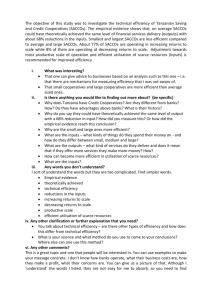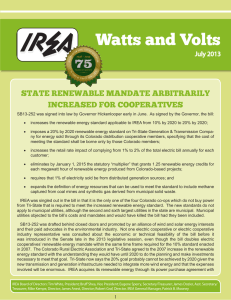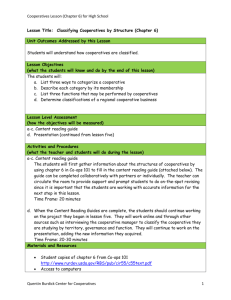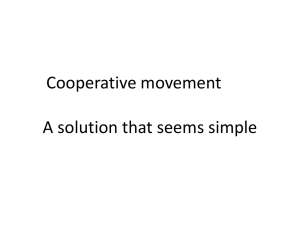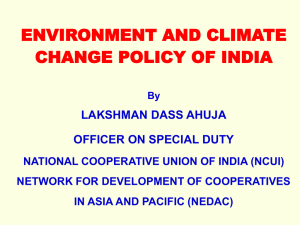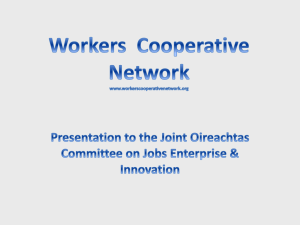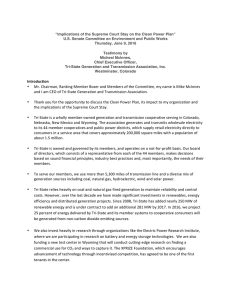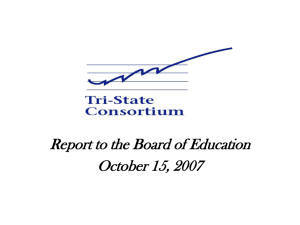SB 13-252 INCREASING COLORADO*S
advertisement
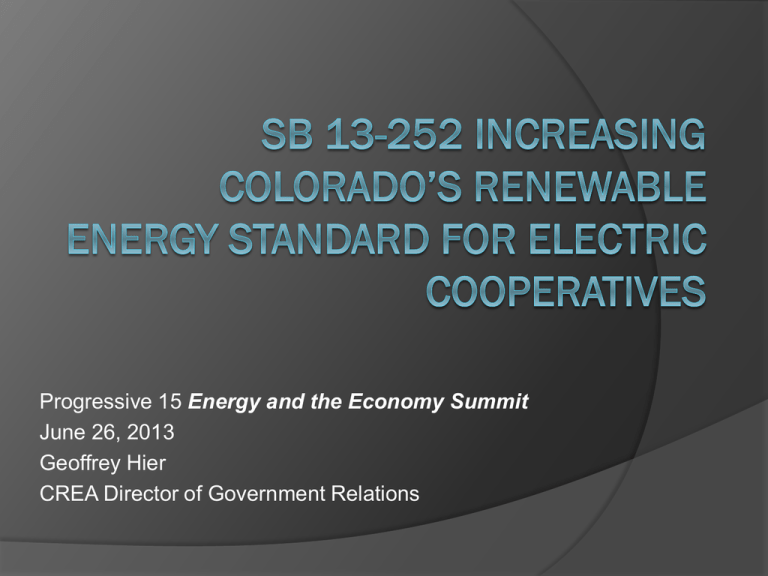
Progressive 15 Energy and the Economy Summit June 26, 2013 Geoffrey Hier CREA Director of Government Relations Colorado Electric Cooperative Renewable Energy Standard History 2004 Amendment 37 passed requiring 10% for IOU’s and municipal utilities and electric distribution cooperatives with over 40,000 meters – (Contained an opt out provision for muni and cooperatives) 2007 HB 07-1281 Supported by CREA – 20% for IOU and 10% for all Cooperatives, large Municipals by 2020 2010 HB 1365 – 30% for IOU’s, no change for Cooperatives SB 252 – Sens. Morse/Schwartz and Reps Ferrandino/Duran With a lifespan of only 12 days in the Senate and 29 days in total, SB 252 passed both chambers on mostly partisan votes (Democratic Senators Hodge and Tochtrop opposed the bill) Governor Hickenlooper has signed into law The primary sponsors all live in areas served by utilities not significantly impacted by the legislation. SB 252 Major Components Expanded RES definition to include coal mine methane and trash-to-gas Revision and repeal of multiplier New 20% RES for Tri-State and IREA 1% DG mandate - .75% mandate for coops with less than 10,000 meters – applies to all 22 co-ops 2% rate cap Annual PUC reporting requirements Costs may only be recovered from Colorado cooperatives Cooperatives Affected Short answer, all in Colorado IREA and Tri-State members more significantly Cooperatives serving Progressive 15 members: Highline Electric High West Energy IREA K.C. Electric Mt. Parks Mt. View Morgan County Electric PVREA United Power Y-W Electric Potential Costs Based on current demand projections, there is no need for additional generation resources for cooperatives until approximately 2018 Any renewables obtained will be replacing existing generation resources DG is generally more expensive than utility scale generation DG usually has to be subsidized by members IREA receives renewable energy through Xcel wholesale contract, getting to 20% not practical given contractual constraints Tri-State will need 500-700 MW to comply by 2020 Wind is currently the least expensive resource @$1.2million/MW Cost for wind 600-840 million dollars Back up gas generation = 300 million dollars Transmission costs ??? Total estimated compliance costs 1-2 billion for Tri-State members An Imperfect Bill Requiring Tri-State to only recover costs from Colorado members creates inequities Retail DG requirement is unclear and could be unobtainable for some cooperatives 2020 deadline is unrealistic 2% rate cap is uncertain 20% too much, too soon Executive Order 2013-003 The reasons for signing the legislation outweigh the reasons for vetoing the bill, but this bill is imperfect. Some of the concerns raised during the legislative process were not given due consideration. Top among these concerns are the feasibility of the implementation timetable, and consumer protections. The advisory committee will work to fully address these concerns, culminating in proposals for the 2014 legislative session. ADVISORY COMMITTEE The Director of CEO appoints an advisory committee, the Chair of the PUC and the Attorney General or their designee are non-voting members. 11 voting members total 9 from specified groups 2 future appointments from stakeholder TBD Designated Appointments Tri-State G&T CREA IREA A renewable energy representative A environmental advocate A representative of a non-profit proficient in electric resource planning A rep actively engaged in agricultural business A rep actively engaged in livestock production A rep actively engaged in irrigation production



